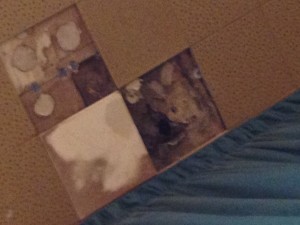The TDSB has been collaborating with parents, community members and other stakeholders since 2010 to explore options for redeveloping the Davisville P.S. school site as a Community Hub. By mid-2012, they had arrived at a redevelopment strategy that offers a realistic, cost-effective approach to building a new school and community hub. This plan involved selling about one quarter of the school’s land, moving parking to underneath a new school and keeping the same amount of playground and field space.
Why would the TDSB spend money on building a new school/community hub?
1. Replacing Davisville P.S. makes more economic sense than repairing it. As of a few years back, Davisville P.S. had over $8-million of outstanding repairs, including the boiler and foundation. This figure may now be in excess of $12 million and will continue to grow as deferred repairs become more complex and costly to fix.
Davisville P.S. has the second highest (meaning second worst) Facility Condition Index score in the TDSB. The Ontario government’s “Prohibitive to Repair” score is 65, which means that any school with a score above 65 would be better to replace than to repair. Davisville P.S. has a score of 169.
2. A larger school is needed to accommodate current and projected enrolment. School capacity at Davisville P.S. was, until recently, 384 students by provincial standards. After the reconfiguration of some spaces to provide more kindergarten classrooms and other measurement changes, the school’s capacity was increased to be 512 students. In reality, no more square footage was added to the building or the outdoor play space so the decrease in utilization rate that was seen this past year doesn’t mean the school is actually less crowded.
With 538 students currently enrolled and a projected enrolment of over 700 students by 2019, this school is bursting at the seams.
3. The area around Davisville P.S. has few public amenities. With a new school building, community space could be integrated into the plans to benefit the entire community and could partially fund the redevelopment.
So, we have the TDSB working with the community to develop a community hub strategy that could be cost-effectively implemented…
How has the Ministry of Education responded?
The TDSB submitted Davisville as one of eight priority capital projects to the Ministry of Education in December 2012. It is notable that every school board in Ontario, regardless of size, was allowed to submit 8 projects.
In March 2014, the Ministry announced the approval and funding of capital projects across the province. TDSB schools only received funding for one project, receiving $11.9-million out of the $700 million (1.7%) allocated by the Ministry at that time. Given that the TDSB educates approximately 12% of Ontario students, this means that the TDSB received six times less than would have been the case if the funds had been allocated on a per-student basis across the province.
The Province did not approve the Davisville P.S. redevelopment proposal, despite an economically sound proposal that involved selling off land to create a community hub. Hmmm… so when the Province speaks about “Schools as Community Hubs” – how do they envision these happening?
Excerpted from the Davisville Parents website

